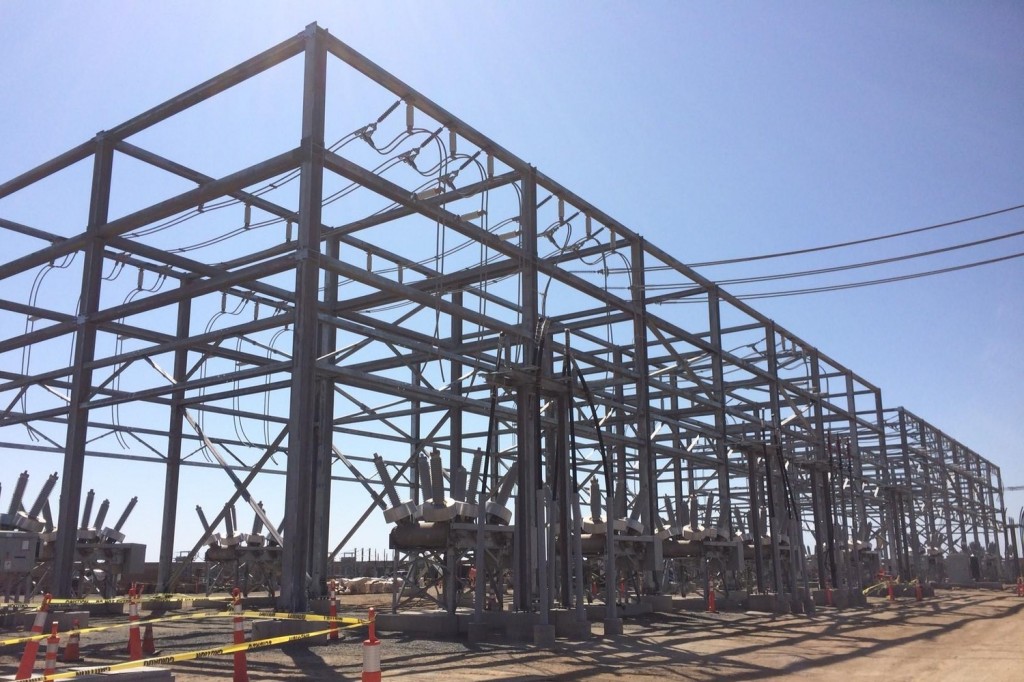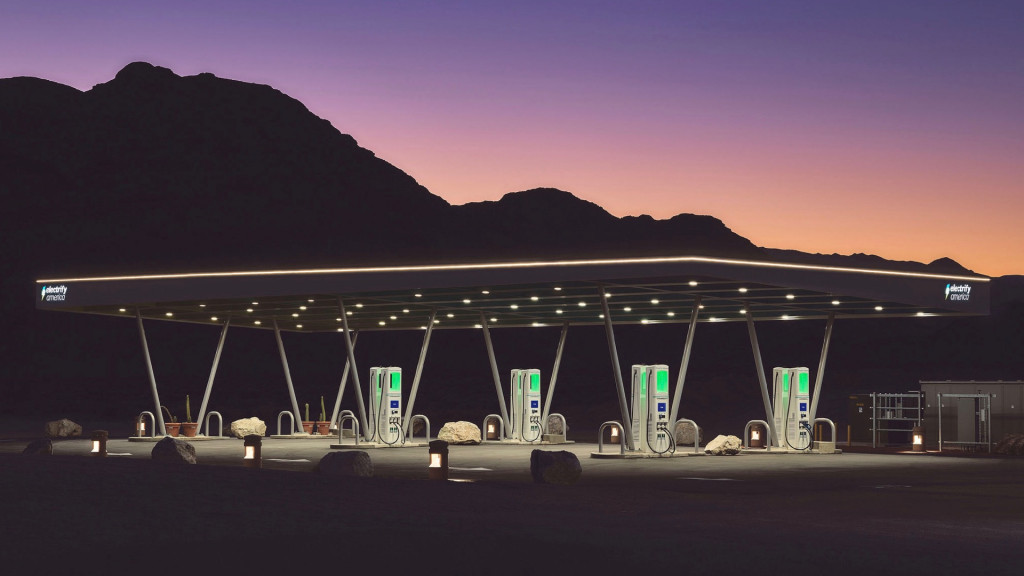A California drought will increase the carbon footprint of electricity used to charge EVs, according to a new report from the Energy Information Administration (EIA).
The drought has cut the state’s hydropower generating capacity nearly in half compared to normal conditions, forcing California to rely on more carbon-intensive sources for a greater amount of its grid mix, according to the EIA.
Hydropower typically produces 15% of California’s electricity with normal levels of precipitation, but that shrinks to an estimated 8% in a drought year, according to the report, which analyzed six California hydropower facilities representing 22% of the state’s hydropower capacity.
Electrify America charging site
Hydropower is typically the third-largest source of electricity in California, the EIA noted. But its availability is heavily dependent on snowpack that forms in winter. That snowpack was 40% below normal levels as of April 1, according to the EIA.
The agency expects the decrease in hydropower generation to lead to an 8% increase in California’s electricity generation from natural gas, a 6% increase in energy-related carbon dioxide emissions in the state, and an average 5% increase in wholesale electricity prices throughout the West.
Any shift away from green energy could increase the carbon footprint of EVs, which are only as clean as the grid they’re plugged into. However, this momentary lapse shouldn’t overshadow the fact that, over a decade, the national power grid has become much cleaner. And as a 2019 study pointed out, the Midwest stands to gain more in the transition to clean power than California.

San Diego Gas & Electric substation
The state has already made great progress in cleaning up its grid. California in April reached a brief time in which the state’s grid was powered entirely—or nearly so—by renewable energy.
The California grid could still use some improvements to ensure EVs can be charged cleanly and reliably, though. Last year’s heat waves prompted alerts about EV charging habits.
Top utilities from the state have also said that the grid will need massive upgrades to be fit for shifting entirely away from the sale of gasoline vehicles by 2035.

cheap lasuna sale – lasuna for sale online buy generic himcolin
Such a well-structured and engaging article. Thank you!
buy besivance generic – order carbocysteine online cheap sildamax online
buy neurontin tablets – nurofen for sale online buy generic azulfidine 500mg
brand probenecid 500mg – order monograph online cheap oral tegretol 400mg
celecoxib canada – indomethacin over the counter order indocin 75mg
buy diclofenac 100mg – cost diclofenac 50mg aspirin online
purchase rumalaya – cheap shallaki without prescription elavil 50mg price
pyridostigmine online buy – imuran 25mg oral buy azathioprine 25mg generic
voveran cheap – buy nimotop tablets nimodipine without prescription
ozobax online – order feldene 20mg online cheap piroxicam 20mg oral
meloxicam drug – meloxicam uk oral toradol
buy artane sale – diclofenac gel where to buy voltaren gel online buy
order cefdinir 300 mg generic – how to get clindamycin without a prescription
accutane usa – order avlosulfon 100 mg pill buy deltasone 20mg for sale
order deltasone 5mg pills – order deltasone 40mg generic permethrin order online
permethrin tablet – acticin generic buy retin gel online
order betamethasone 20 gm online – betnovate creams buy benoquin online cheap
buy metronidazole 400mg generic – metronidazole 400mg pills cost cenforce
buy amoxiclav – synthroid brand purchase synthroid generic
buy cleocin 150mg – order indocin 50mg pills buy indomethacin cheap
losartan 50mg oral – order cephalexin 500mg cephalexin cost
buy crotamiton sale – purchase eurax for sale aczone sale
order bupropion 150mg – order bupropion 150mg oral shuddha guggulu
provigil online order – melatonin cheap order meloset 3 mg sale
progesterone 100mg pill – buy generic clomiphene online buy generic fertomid
xeloda 500mg us – buy capecitabine online order danocrine 100mg generic
buy fosamax 70mg pills – purchase pilex online cheap medroxyprogesterone order
buy estrace 2mg generic – buy letrozole 2.5 mg pill anastrozole order
гѓ—гѓ¬гѓ‰гѓ‹гѓійЂљиІ©гЃЉгЃ™гЃ™г‚Ѓ – г‚ўгѓўг‚г‚·гѓ« е‰ЇдЅњз”Ё г‚ўг‚ёг‚№гѓгѓћг‚¤г‚·гѓі гЃЉгЃ™гЃ™г‚Ѓ